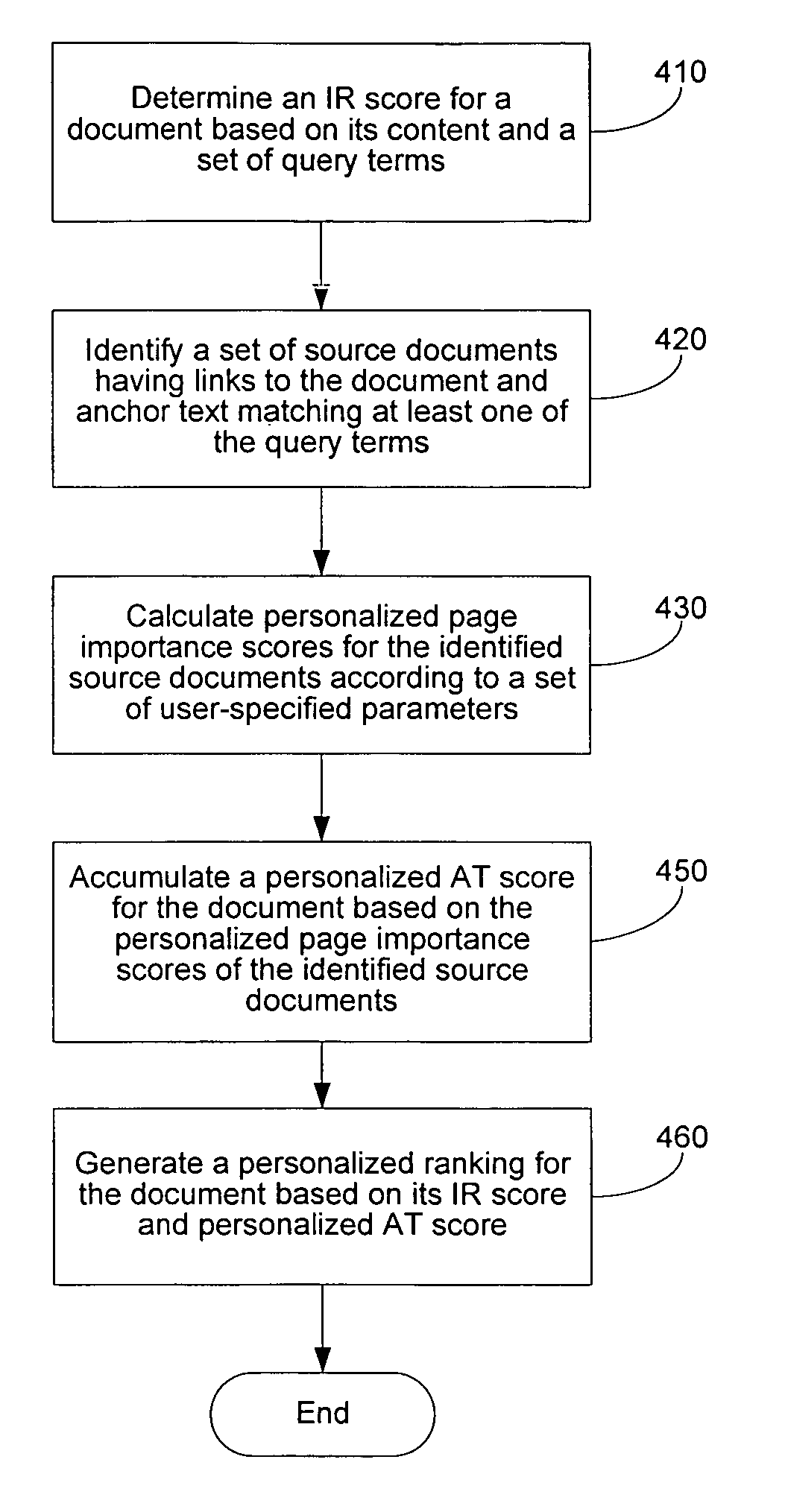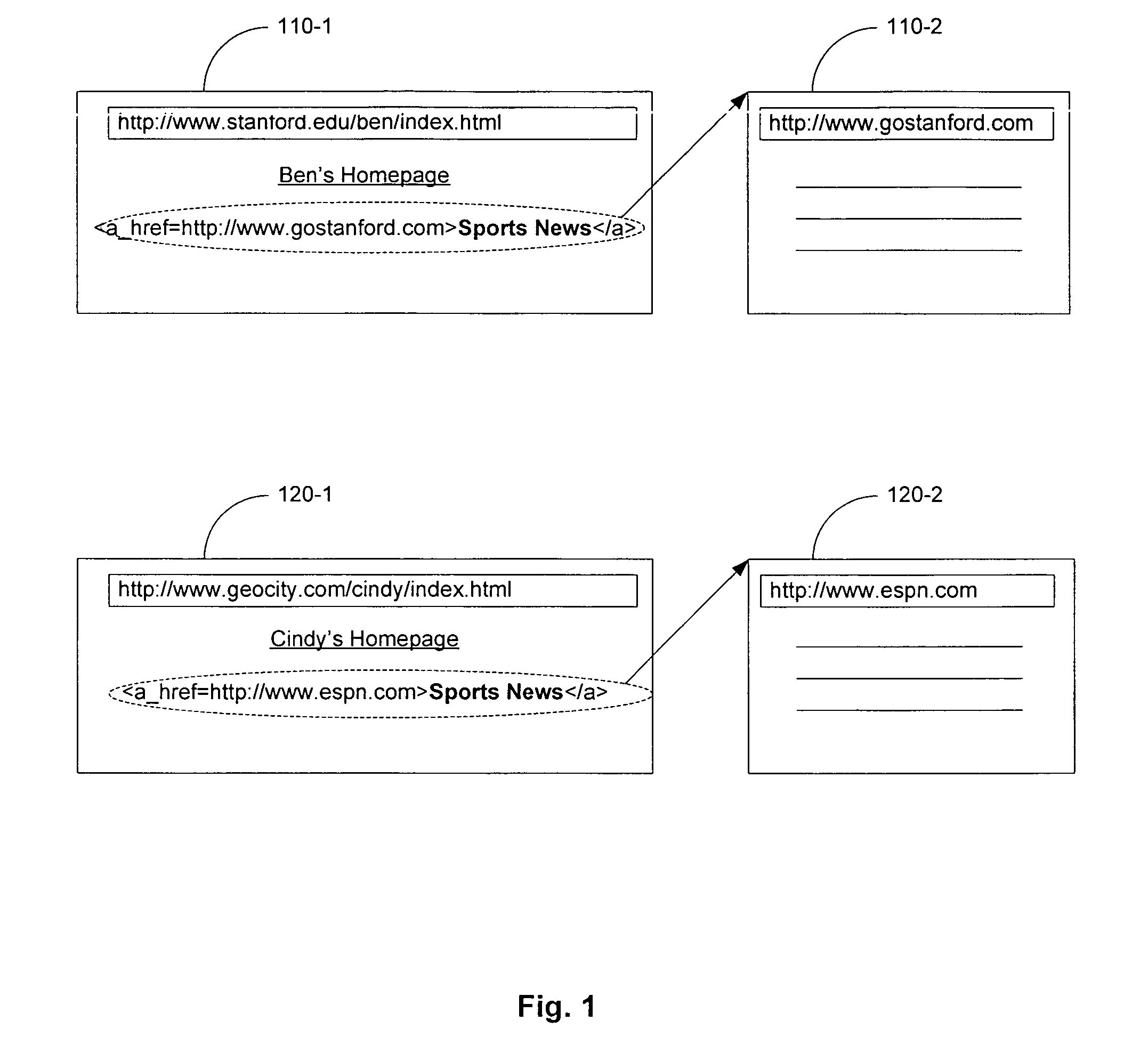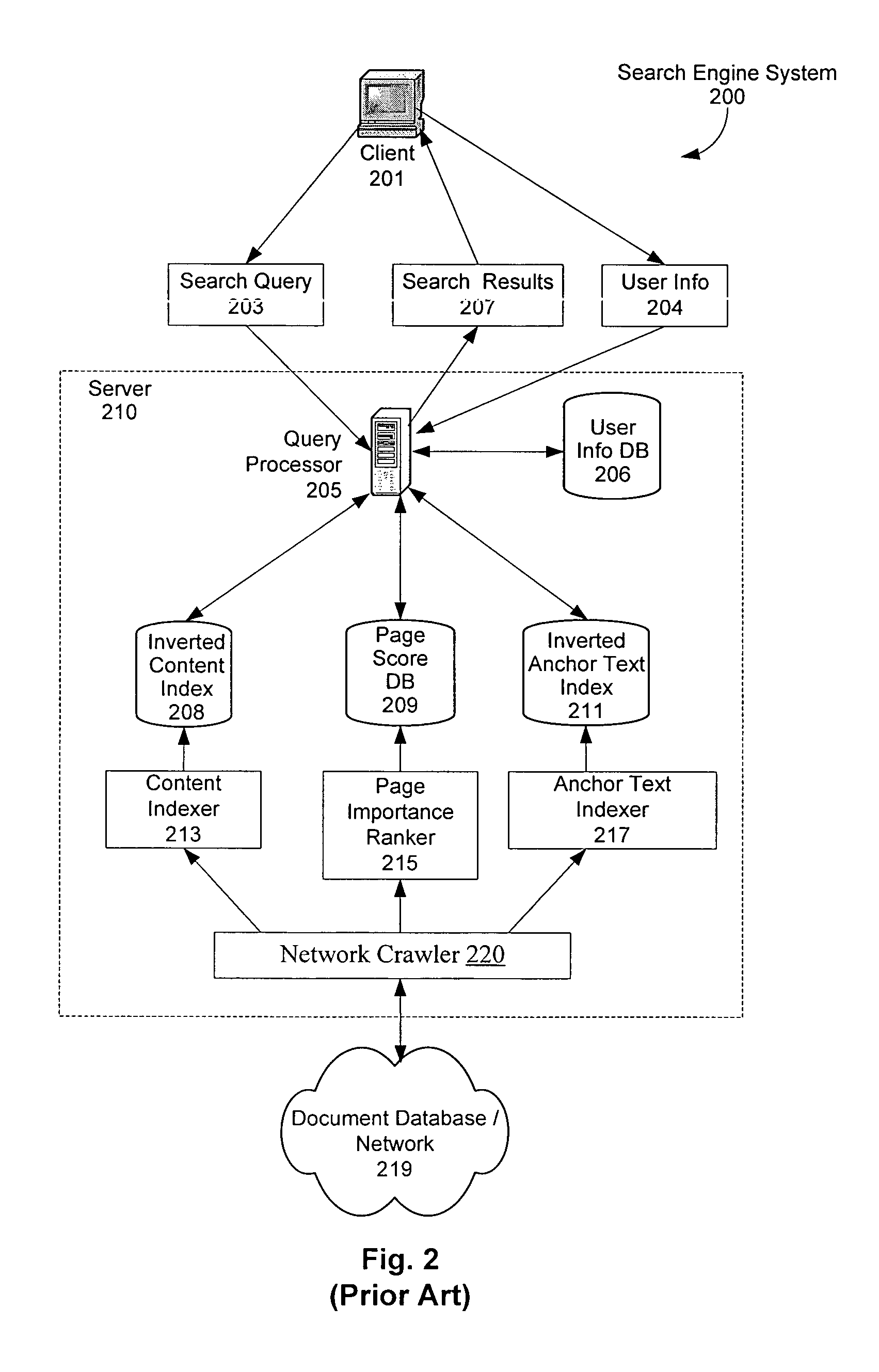Personalizing anchor text scores in a search engine
a search engine and anchor text technology, applied in the field of personalizing anchor text scores in search engines, can solve the problems of user overwhelmed by the enormous number of documents retrieved by a search engine, and the ordering of documents in a set of search results may not be optimal for a user with specific personal preferences
- Summary
- Abstract
- Description
- Claims
- Application Information
AI Technical Summary
Benefits of technology
Problems solved by technology
Method used
Image
Examples
Embodiment Construction
[0020]Referring to FIG. 1, assume that a user named Adam is looking for a website covering Stanford's sports teams. For the purposes of this explanation, we will assume that Adam would prefer that the search engine return www.gostanford.com 110-2 ahead of www.espn.com 120-2. To achieve this goal, one approach would be to allow a user like Adam to instruct the search engine to personalize the rankings of search results by providing appropriate user information such as the user's background information or a plurality of favorite websites. For example, Adam may register with the search engine that he prefers web pages whose URL includes the term “Stanford” over other web pages.
[0021]In FIG. 1, source page 110-1 (www.stanford.edu / ben / index.html) has a URL that includes “stanford”, while source page 120-1 (www.geocity.com / cindy / index.html) does not. If Adam enters a search query of “sports news”, the query terms will be found in the anchor text of both of these source pages 110-1, 120-1....
PUM
 Login to View More
Login to View More Abstract
Description
Claims
Application Information
 Login to View More
Login to View More - R&D
- Intellectual Property
- Life Sciences
- Materials
- Tech Scout
- Unparalleled Data Quality
- Higher Quality Content
- 60% Fewer Hallucinations
Browse by: Latest US Patents, China's latest patents, Technical Efficacy Thesaurus, Application Domain, Technology Topic, Popular Technical Reports.
© 2025 PatSnap. All rights reserved.Legal|Privacy policy|Modern Slavery Act Transparency Statement|Sitemap|About US| Contact US: help@patsnap.com



